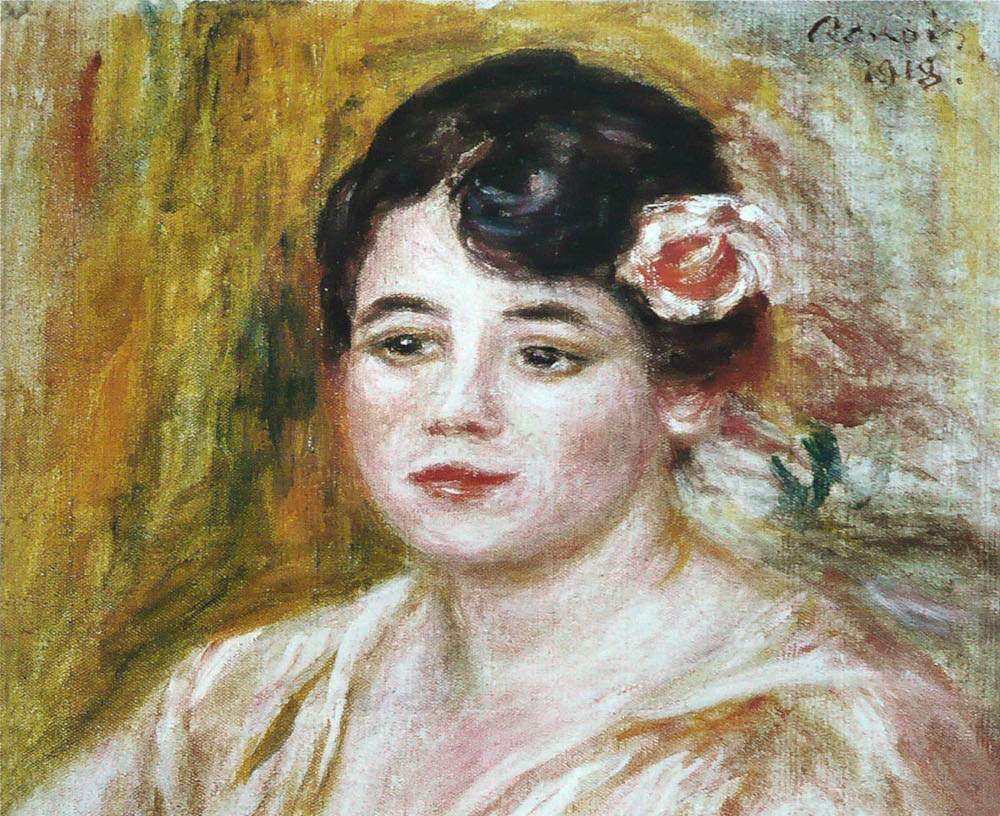Palazzo Roverella in Rovigo will host from Feb. 25 to June 25, 2023, the exhibition Renoir and Italy, curated by Paolo Bolpagni and promoted by the Fondazione Cassa di Risparmio di Padova e Rovigo, with the City of Rovigo and the Accademia dei Concordi.
Impressionism, which although it had fascinated him, began to unconvince him. The then 40-year-old Pierre Auguste Renoir (Limoges, 1841 - Cagnes-sur-Mer, 1919) then decided to turn to great Italian art. He thus began a personal Grand Tour of his own in 1881 to study the masters of the Renaissance.
Toward the end of the 1870s, Renoir was shaken by a profound creative restlessness, which led him to embark on a trip to Italy in 1881: a tour that began in Venice, where the artist was fascinated by Carpaccio and Tiepolo (he was already well acquainted with Titian and Veronese, whom he admired and studied in the Louvre), and continued by brief stops in Padua and Florence, until he reached Rome. Here he was overwhelmed by the power of the Mediterranean light and developed an admiration for the Renaissance masters, especially Raphael, whose frescoes in the Villa Farnesina he appreciated for their admirable “simplicity and grandeur.”
A further stop on his journey was the Gulf of Naples: here Renoir discovered Pompeian paintings, was enraptured by the beauty of the island of Capri and the ancient masterpieces on display at the archaeological museum. He finally reached Palermo, where he met Richard Wagner and portrayed him in a work that became famous.
The exhibition aims to retrace that Italian journey of Renoir and especially to investigate its revolutionary consequences.
“Fusing the lesson of Raphael and that of Jean-Auguste Dominique Ingres, the painter recovers a sharp drawing and an attention to the volumetries and monumentality of the figures, in the sign of a synthesis that, as anticipated, enucleated a personal form of classicism, while the dominant trends were veering toward Postimpressionism on the one hand and Symbolism on the other,” the curator emphasizes.
Also through the thread of the biographical account of his son Jean, a famous filmmaker, the exhibition focuses on this phase of Renoir’s production: from his trip to Italy to the works of his old age. Highlighting the originality of an art that was by no means laggardly, but constituted one of the first examples of the “modern classicism” that would later be pursued by many painters of the 1920s and 1930s, particularly in Italy, as will be highlighted by the comparisons, some of them unsuspected, that will be on view in the rooms of Palazzo Roverella.
“Painting in a mighty neo-Renaissance style, where the warm, shimmering tones borrowed from late Titian and Rubens, as well as from eighteenth-century Fragonard and Watteau, were combined with references to a mythical and classical iconography,” Bolpagni points out, “Renoir anticipated the ’return to order,’ an aspect of his production that has not been sufficiently focused on in that perspective, since what superficially appeared to many to be a regression was, in fact, a foreshadowing of much of the painting that would develop between the wars.”
It was music, rather than painting, that marked Pierre-Auguste Renoir’s childhood. He joined the Saint-Sulpice church choir and sang under the direction of the great composer Charles Gounod, who firmly believed in the boy’s vocal possibilities. Only later did he come to the discovery of en plein air painting that led him to Impressionism, Renoir’s phase best known to the general public. It was actually a rather short phase, also characterized by a certain disparity of views with Monet, Pissarro and Degas.
To overcome any crisis came the trip to Italy.
For info: www.palazzoroverella.com
Image: Pierre-Auguste Renoir, Portrait of Adèle Besson, detail (1918; oil on canvas, 41 x 37 cm; Besançon, Musée des Beaux-Arts et d’Archéologie)
 |
| Not just Impressionism: an exhibition on Renoir and his journey to Italy in Rovigo in 2023 |
Warning: the translation into English of the original Italian article was created using automatic tools. We undertake to review all articles, but we do not guarantee the total absence of inaccuracies in the translation due to the program. You can find the original by clicking on the ITA button. If you find any mistake,please contact us.